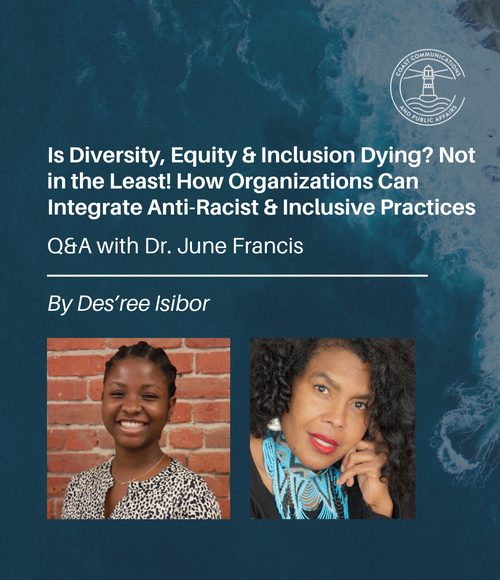The Good, the Bad and the Ugly.
It’s hard to fathom that 2014 was ten years ago. Several stories shook the world including the mysterious flight MH370 tragedy and the outbreak of Ebola in West Africa. In pop culture we witnessed the viral ALS Ice Bucket Challenge while the Brazilian soccer World Cup broke television records. A decade has passed since 2014 and its catalogue of crisis communications where some organizations hit the target, some missed the mark and others backfired altogether.
If we learned anything from 2014 it’s that anything can — and often does — happen so when crises occur, planning and preparedness is your most valuable asset. Proactive and professional crisis comms planning enables impacted organizations to respond quickly and consistently, minimizing potential damage and providing greater control of the narrative. It also reduces that moment of being frozen and trying to decide what to do next. It's simple: Open the plan. Work the plan.
Looking back a decade, we’ve recapped on some international crisis communications examples that were in tune and others that were entirely tone deaf.
The Good: Tesco takes ownership
UK grocery retailer Tesco was one of the biggest names involved in the 2013/14 horsemeat scandal. When the story broke that significant amounts of horsemeat had been identified in products advertised as beef, Tesco responded swiftly, CEO Phillip Clarke issued a string of public statements acknowledging the issue, accepting the blame and outlining the steps the company was taking to rectify the issue and ensure it wasn’t repeated.
Tesco communicated effectively on the introduction of new, rigorous testing policies for all suppliers, with 74% of respondents stating that they had heard about the firm’s direct response. As well as a swift and sincere public apology, the firm compensated those affected by the scandal. Ultimately, Tesco’s transparency and commitment to change has allowed the firm to steadily rebuild consumer trust. They remain one of the largest grocers in the UK.
Lessons Learned:
- Communicate quickly and clearly – Tesco’s swift, transparent and thorough response to the issue was a key pillar in their steady rebuild of consumer trust. When time is off the essence, preparedness is key!
- Own the problem and aim for improvement – Tesco publicly accepted responsibility rather than shifting the blame to its suppliers or ignoring the problem. The retailer communicated its commitment to improvement by outlining the steps it was implementing to rectify the situation and prevent any chance of history repeating itself.
- Engage with stakeholders – Tesco directly engaged with a key stakeholder, its consumers, offering compensation to those affected by the issue. By actively listening, Tesco gained feedback that informed its strategy to rebuild consumer trust and helped shape future communications strategies.
The Bad: GM stalls to recall faulty product
General Motors (GM) became embroiled in a public scandal in 2014 when it failed to intervene and recall faulty ignition switches. The fault was directly linked to 13 deaths and it was later revealed that the problem could have been rectified for just 56 cents per switch! It was reported that GM had been aware of the fault since 2001, 13 years prior. Not a good look.
To make matters worse, GM’s ineffective communication around the issue was led by its CEO Mary Barra, who was criticized for her initial reluctance to respond and later for the lack of authenticity when appearing before the US congress.
While GM’s communication strategy improved in the wake of public pressure, a lack of engagement in the early stages of the crisis only galvanised the public’s opinion that the firm had been acting with a sheer lack of transparency and sincerity. The high-profile mishandling reinforced the need for a timely response, adequate media training amongst senior executives and consistent, deliberate messaging in responding to crises before they spread to a corporate wildfire.
Following the recall of millions of cars and monumental reputational damage, GM paid a $35 million fine for failing to report the problem — the largest fine ever produced by the National Highway Traffic Safety Administration.
Lessons Learned:
- Authenticity above all else – When crisis strikes, transparent and authentic communication is at the cornerstone of a successful response. The public’s perception of Barra’s disingenuous answers added fuel to the fire, highlighting the need to plan messaging that is sincere and consistent.
- Proper preparation – Lamentably, GM were aware of the building issue for over a decade yet still failed to prepare. Sufficient crisis communications planning could have made a world of reputational difference when the story eventually broke. (As an aside – did comms know about the problem? Or was it a surprise to them too?)
- A stitch in time saves nine – Theodore Roosevelt iconically quipped, “In any moment of decision, the best thing you can do is the right thing, the next best thing is the wrong thing, and the worst thing you can do is nothing.” The same applies in crisis communications. When time (and the public) are against you, pre-planned messaging is a necessity.
The Ugly: Abercrombie’s unsightly outlook
Before his resignation in 2014, CEO of popular fashion retailer Abercrombie & Fitch, Mike Jeffries, made some astounding comments about the brand’s exclusionary preferences in a 2006 interview.
“We go after the attractive all-American kid with a great attitude and a lot of friends. A lot of people don’t belong [in our clothes], and they can’t belong. Are we exclusionary? Absolutely.”
Jeffries comments resurfaced with severe media backlash in 2013 and 2014, and then again in 2022 with a documentary outlining the brand’s fall from grace. This is an example of a crisis communications nightmare followed by a badly mismanaged response. Aside from obvious long-term reputational damage and a loss of market relevance due to perceptions of elitism stemming from Jeffries’s comments, the firm’s ineffective response only stoked the fire.
The firm remained silent for years on the original 2006 comments, opting to sit tight in favour of a reactive communication strategy as opposed to proactively managing the narrative. In instances of crisis, responding quickly and authentically are imperative. Abercrombie & Fitch did neither.
Lessons learned:
- Know your market – In a world that grows increasingly intolerant to marginalization of any kind, Jeffries’s comments continue to age like sour milk. It feels all-too-obvious to condemn his comments, but one thing is for sure — Jeffries showcased a bewildering lack of audience awareness. Did someone say, ‘media training?’
- You can run but you can’t hide – Abercrombie & Fitch demonstrated a lack of sincerity when they failed to act on the original indecent. Eight years later when the story broke, any opportunity to atone for the public relations horror show was long gone. A lack of decisive action to fire Jeffries (who later stepped down due to financial performance related pressures) further pointed to a lack of any real plan to rectify the situation.
Fail to prepare, prepare to fail
When it comes to crisis communications, an ounce of prevention is worth a pound of cure. It is an inherently tricky landscape where the difference between success and failure often hinges on preparedness, timeliness and authenticity. And truly knowing the best practices!
While it may be true that skilful pilots gain their reputations during a storm, few would dare to navigate choppy waters without a suitable plan and a clear approach. When your reputation is on the line, ensure you’ve planned for all eventualities!
Coast Communications and Public Affairs are experts in developing crisis communications plan: contact us if you want to be proactive and prepare and train for a crisis. Or call us anytime if you have an issue or a crisis! Learn more here.


